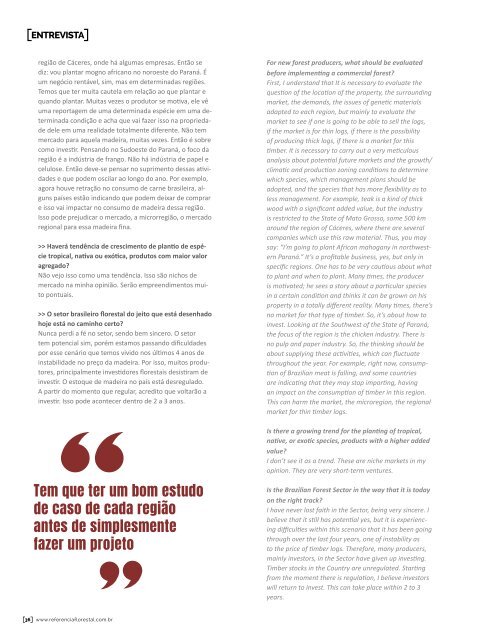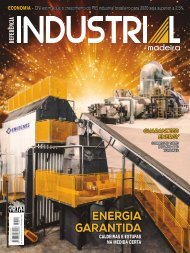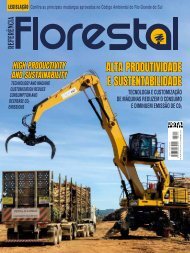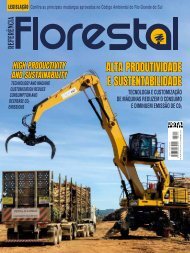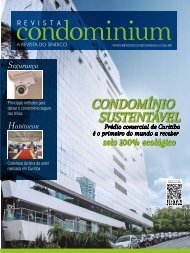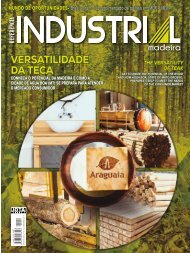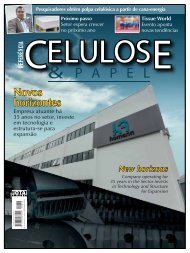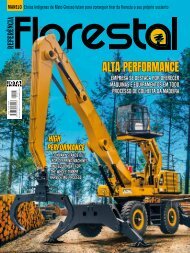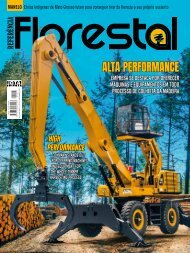*Março/2019 - Revista Florestal 205
Create successful ePaper yourself
Turn your PDF publications into a flip-book with our unique Google optimized e-Paper software.
ENTREVISTA<br />
região de Cáceres, onde há algumas empresas. Então se<br />
diz: vou plantar mogno africano no noroeste do Paraná. É<br />
um negócio rentável, sim, mas em determinadas regiões.<br />
Temos que ter muita cautela em relação ao que plantar e<br />
quando plantar. Muitas vezes o produtor se motiva, ele vê<br />
uma reportagem de uma determinada espécie em uma determinada<br />
condição e acha que vai fazer isso na propriedade<br />
dele em uma realidade totalmente diferente. Não tem<br />
mercado para aquela madeira, muitas vezes. Então é sobre<br />
como investir. Pensando no Sudoeste do Paraná, o foco da<br />
região é a indústria de frango. Não há indústria de papel e<br />
celulose. Então deve-se pensar no suprimento dessas atividades<br />
e que podem oscilar ao longo do ano. Por exemplo,<br />
agora houve retração no consumo de carne brasileira, alguns<br />
países estão indicando que podem deixar de comprar<br />
e isso vai impactar no consumo de madeira dessa região.<br />
Isso pode prejudicar o mercado, a microrregião, o mercado<br />
regional para essa madeira fina.<br />
>> Haverá tendência de crescimento de plantio de espécie<br />
tropical, nativa ou exótica, produtos com maior valor<br />
agregado?<br />
Não vejo isso como uma tendência. Isso são nichos de<br />
mercado na minha opinião. Serão empreendimentos muito<br />
pontuais.<br />
>> O setor brasileiro florestal do jeito que está desenhado<br />
hoje está no caminho certo?<br />
Nunca perdi a fé no setor, sendo bem sincero. O setor<br />
tem potencial sim, porém estamos passando dificuldades<br />
por esse cenário que temos vivido nos últimos 4 anos de<br />
instabilidade no preço da madeira. Por isso, muitos produtores,<br />
principalmente investidores florestais desistiram de<br />
investir. O estoque de madeira no país está desregulado.<br />
A partir do momento que regular, acredito que voltarão a<br />
investir. Isso pode acontecer dentro de 2 a 3 anos.<br />
For new forest producers, what should be evaluated<br />
before implementing a commercial forest?<br />
First, I understand that It is necessary to evaluate the<br />
question of the location of the property, the surrounding<br />
market, the demands, the issues of genetic materials<br />
adapted to each region, but mainly to evaluate the<br />
market to see if one is going to be able to sell the logs,<br />
if the market is for thin logs, if there is the possibility<br />
of producing thick logs, if there is a market for this<br />
timber. It is necessary to carry out a very meticulous<br />
analysis about potential future markets and the growth/<br />
climatic and production zoning conditions to determine<br />
which species, which management plans should be<br />
adopted, and the species that has more flexibility as to<br />
less management. For example, teak is a kind of thick<br />
wood with a significant added value, but the industry<br />
is restricted to the State of Mato Grosso, some 500 km<br />
around the region of Cáceres, where there are several<br />
companies which use this raw material. Thus, you may<br />
say: “I’m going to plant African mahogany in northwestern<br />
Paraná.” It’s a profitable business, yes, but only in<br />
specific regions. One has to be very cautious about what<br />
to plant and when to plant. Many times, the producer<br />
is motivated; he sees a story about a particular species<br />
in a certain condition and thinks it can be grown on his<br />
property in a totally different reality. Many times, there’s<br />
no market for that type of timber. So, it’s about how to<br />
invest. Looking at the Southwest of the State of Paraná,<br />
the focus of the region is the chicken industry. There is<br />
no pulp and paper industry. So, the thinking should be<br />
about supplying these activities, which can fluctuate<br />
throughout the year. For example, right now, consumption<br />
of Brazilian meat is falling, and some countries<br />
are indicating that they may stop importing, having<br />
an impact on the consumption of timber in this region.<br />
This can harm the market, the microregion, the regional<br />
market for thin timber logs.<br />
Is there a growing trend for the planting of tropical,<br />
native, or exotic species, products with a higher added<br />
value?<br />
I don’t see it as a trend. These are niche markets in my<br />
opinion. They are very short-term ventures.<br />
Tem que ter um bom estudo<br />
de caso de cada região<br />
antes de simplesmente<br />
fazer um projeto<br />
Is the Brazilian Forest Sector in the way that it is today<br />
on the right track?<br />
I have never lost faith in the Sector, being very sincere. I<br />
believe that it still has potential yes, but it is experiencing<br />
difficulties within this scenario that it has been going<br />
through over the last four years, one of instability as<br />
to the price of timber logs. Therefore, many producers,<br />
mainly investors, in the Sector have given up investing.<br />
Timber stocks in the Country are unregulated. Starting<br />
from the moment there is regulation, I believe investors<br />
will return to invest. This can take place within 2 to 3<br />
years.<br />
36 www.referenciaflorestal.com.br


